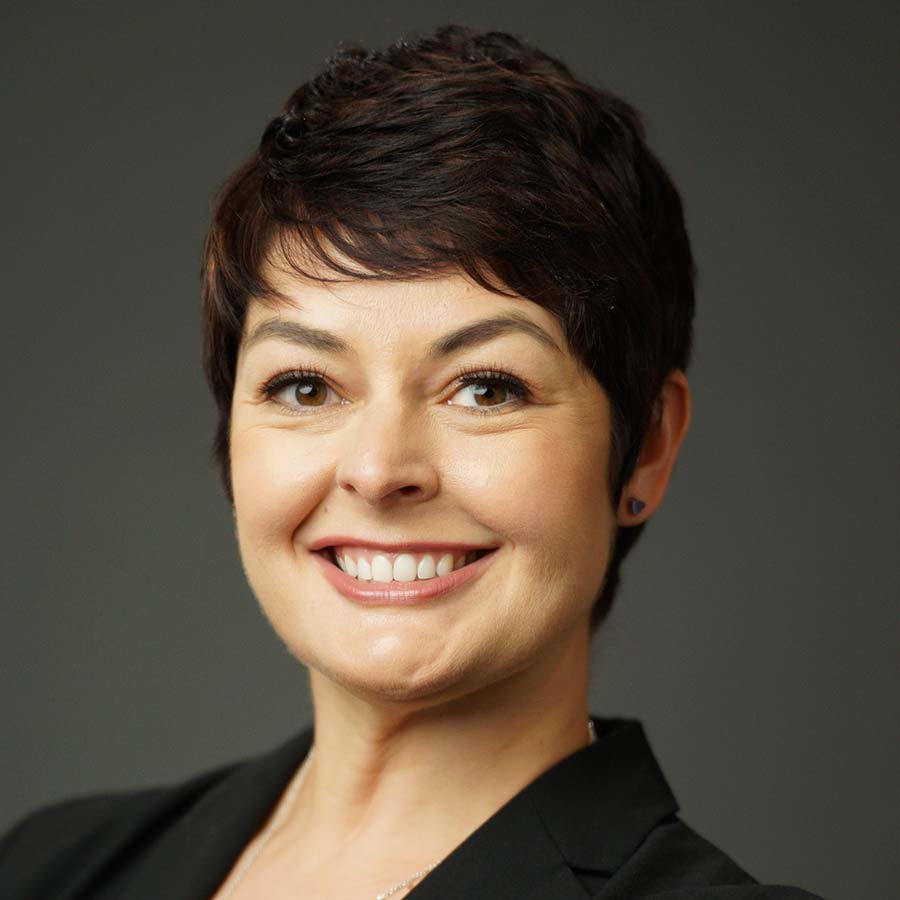Shaffer Grants Funding the Future: A Look Back at the Shaffer Class of 2005
Since 1978, Glaucoma Research Foundation has been investing in high-risk/high-reward research programs in the form of Shaffer Grants.

These pilot grants have been described as “a crown jewel in our field” by high-ranking tenured glaucoma researchers at top-tier universities.
In fact, many tenured investigators with consistent federal funding for research credit GRF’s Shaffer program as the first grant they received, and the one which solidified their career path in glaucoma research.
For examples, look no further than the Shaffer Grant Class of 2005! These investigators have gone on to achieve amazing feats in both academia and industry, including becoming Chairs of their respective ophthalmology departments, authoring groundbreaking papers that changed the field of glaucoma research, and mentoring the future leaders in glaucoma research and patient care.
David Friedman, MD, PhD, MPH
Shaffer Grant Title: Identification and clinical characterization of black families with glaucoma for genetics research
In 2005, Dr. Friedman was an Associate Professor in Ophthalmology at Wilmer Eye Institute at Johns Hopkins University. Shortly afterward, Dr. Friedman received his PhD in Epidemiology from Johns Hopkins in 2007 and became the Alfred Sommer Professor of Ophthalmology as well as Professor in Department of International Health at Johns Hopkins in 2008.
Today, Dr. Friedman is the Edith Ives Cogan Professor of Ophthalmology, Director of Glaucoma and the Medical Director of Clinical Research, and the Co-Director of the Glaucoma Center of Excellence at Harvard Medical School. He is also a member of the Board of Directors of Glaucoma Research Foundation. Dr. Friedman is world renowned for his contributions to the study of epidemiology and prevention of angle-closure glaucoma. He has identified novel dynamic risk factors for angle closure, and his work formed the foundation for two seminal studies of angle closure glaucoma treatment including the EAGLE Trial and the Zhongshan Angle Closure Prevention (ZAP) Study, both of which were published in the journal Lancet. He co-edited a definitive book on angle-closure glaucoma and has published over 500 peer-reviewed articles.
Markus Kuehn, PhD (U Iowa)
Shaffer Grant Title: Molecular and Functional Characterization of a Novel, Spontaneously Occurring Feline Model of Congenital Glaucoma
In 2005, Dr. Kuehn was an Associate Research Scientist at University of Iowa at the time his Shaffer Grant was awarded and was promoted to Assistant Professor (tenure-track faculty) in August 2007.
Now: Dr. Kuehn is a Professor of Ophthalmology at U Iowa and Associate Director of the VA Center for Prevention and Treatment of Visual Loss. He has authored over 100 papers. His research is primarily focused upon the role of inflammation in the pathophysiology of glaucoma and the role of inflammation. One goal of his research is to determine if whether suppressing inflammation in glaucoma is clinically beneficial or if the process should be left unimpeded. Another goal is to understand the events that lead to elevated intraocular pressure, a significant risk factor for the development of glaucoma.
About his Shaffer grant, Dr. Kuehn says “The Shaffer grant came at a critical point in my career. It allowed me to build my research program and establish collaborations with colleagues that continue to this day.”
Keith Martin, MD
Shaffer Grant Title: Stem cell therapy as a potential treatment for glaucoma
In 2005, Dr. Martin established the Glaucoma Research Laboratory at the Centre for Brain Repair at University of Cambridge and credits his Shaffer grant as “instrumental in helping me establish my glaucoma research in the early stages of my career.” He was elected Professor of Ophthalmology at University at Cambridge in 2009 and was awarded the Translational Research Award by the ARVO Foundation for Eye Research in 2010 (which is an international prize for a researcher under 50 whose work has the potential to lead to major breakthroughs in the treatment of eye disease). Dr. Martin was also awarded the Duke Elder Medal by the Royal College of Ophthalmologists in 2017.
A Legacy of Funding: Dr. Martin’s 2005 Shaffer grant laid the groundwork for his larger grants that went on to demonstrate for the first time that stem cell transplantation could protect against retinal ganglion cell loss in experimental glaucoma. The PhD student who worked on the Shaffer project, and Dr. Martin’s first-ever PhD student, was Tom Johnston – who has gone on to lead the RReSTORe Consortium that is working to advance the potential of cell transplantation as a future therapy for glaucoma. Further Shaffer pilot funding in 2011 helped Dr. Martin demonstrate for the first time that human stem cells could protect human retinal ganglion cells in culture.
Today, Dr. Martin is the Managing Director of the Centre for Eye Research Australia (CERA) and the Ringland Anderson Professor and Head of Ophthalmology at the University of Melbourne. He has authored over 300 articles in the fields of glaucoma research and neuroprotection.
Sayoko Moroi, MD, PhD
Shaffer Grant Title: The Role of Beta2-Adrenergic Receptor Genetic Polymorphisms on Variations in Aqueous Humor Flow and Drug Response in Humans
In 2005, Dr. Moroi was an Associate Professor of Ophthalmology at the University of Michigan Kellogg Eye Center. Findings published in JAMA Ophthalmology in 2007
As a clinician-scientist at an institution that champions the advancement of women in academics, Dr. Moroi made a priority to raise a family of four sons with her husband, who was also a clinician-scientist. In the demanding roles of mother, supportive spouse, glaucoma specialist, and leadership positions as service chief and fellowship director, Dr. Moroi balanced these responsibilities with perseverance in research. Grants from private foundations, such as the Glaucoma Research Foundation, are vital for clinician scientists who are expected to perform in the clinic and operating room, build a research program, teach the next generation of ophthalmologists, and balance caregiving of a young family. At the 2018 American Academy of Ophthalmology meeting in Chicago, Dr. Moroi became the second woman ever to deliver the 39th Robert N. Shaffer Lecture, named in honor of one of the founders of Glaucoma Research Foundation (GRF). After serving 25 years at University of Michigan, she also became the first female chair of ophthalmology by returning to her alma mater, the Ohio State University in 2020. She remains a Professor Emeritus at University of Michigan.
Today, Dr. Moroi is the William H. Havener, MD, Endowed Chair, Professor with tenure, and Chair of Department of Ophthalmology and Visual Sciences at The Ohio State University. She has authored 297 papers, book chapters, and books.
Rob Nickells, PhD (U Wisconsin)
Shaffer Grant Title: Mapping ganglion cell susceptibility genes in inbred mice
Since 2005, Dr. Nickells has continued to examine the molecular pathology of retinal ganglion cell death after both acute optic nerve damage and chronic damage associated with glaucoma pathology. His work has focused on the role of epigenetic changes to histone acetylation that occur early in the cell death process and the involvement of BCL2 gene family proteins in the activation of ganglion cell apoptosis. Additionally, he has continued to refine and characterize mouse models of optic nerve damage. He has authored or co-authored over 90 papers and book chapters, which have been cited by over 7000 other publications.
Today, Dr. Nickells is a Professor and former Vice Chair of Research in the Department of Ophthalmology and Visual Sciences with associations with the McPherson Eye Research Institute, at the University of Wisconsin-Madison.
Hemant Pawar, PhD (U Michigan)
Shaffer Grant Title: Genetics of MICC: Multiple Iridociliary Cysts with Glaucoma
Since 2005, Dr. Pawar made the career shift to industry as a Staff Scientist at Applied Biosystems in 2007. He developed a system for DNA extraction from forensic sample type evidence. His previous work carried out under the grant on Genetics of MICC was very helpful in this work. He then moved on to Alcon to lead assay development for drug screening program for adult-onset macular degeneration.
Today, Dr. Pawar has been the Director of Research & Development at Natera for almost 11 years. He is heavily involved in non-invasive prenatal diagnosis based on liquid biopsy, circulating free (cf)DNA, and next-generation sequencing technologies. Genetics and molecular biology are the backbone of his everyday routine.
Article by Cynthia Steel, PhD, MBA. Posted on October 20, 2025.
Pictured above, top row, L-R: David Friedman, Markus Kuehn, Keith Martin; bottom row, L-R: Sayoko Moroi, Rob Nickells, Hemant Pawar.

Cynthia Steel, PhD
Cynthia Steel, PhD is the Chief Scientific Officer for Glaucoma Research Foundation. With more than a decade of experience dedicated to the science and strategy behind ophthalmic therapies, her work is grounded in a commitment to improving patient outcomes and translating cutting-edge science into meaningful clinical applications.